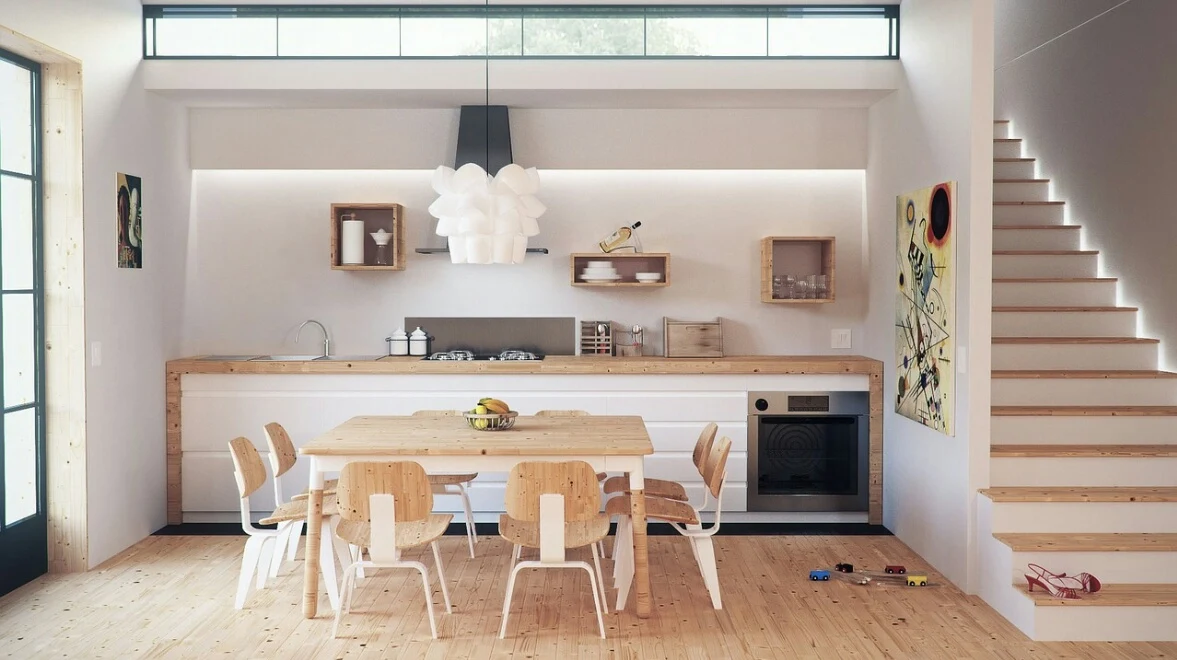If perhaps the only thing that you know about Scandinavian and minimalist design is that IKEA sells a lot of it, you will need to know more. Especially if you’re thinking of decorating your apartment (for example, a modern one in kuchai lama) in modern tastes. Scandinavian and minimalist design have been the go-to design styles for quite a while.
As it goes, the world of interior design can be fraught with the perils of confusing concepts and vague terminology. In order to plan interior design endeavors so that the end product suits your tastes and your home, you really need to understand the language of design and décor in order to really talk about nuances found in certain styles.
Sometimes you hear Scandinavian and Minimalist being used interchangeably. However, they are not the same. To the untrained eye, spaces with Scandinavian or minimalist design influences may look eerily similar. But, as with all things in interior design, the difference is in the details. While they both emphasize simplicity and function, the main difference between Minimalism and Scandinavian design comes down to the materials used.
Read on for some insight that will help you on your way to navigating these two design terms and aesthetics successfully.
Minimalist design
Minimalism as a design aesthetic has its roots in the minimalism art movement in post-World War II in the 1960s and 1970s as a reaction against abstract expressionism. Colloquially, minimalism now means anything that is spare, or stripped to its bare essentials.
Nowadays, minimalism in design refers to design that highlights the architecture of the space, letting it shine above all else. Minimalist design is usually streamlined with clean lines, flowing movement and wide open-concept spaces.
It pays strong homage to both industrialism and functionality. Thus, industrial materials and geometric forms are favored, along with monochromatic or dichromatic color schemes (think black and white).
Minimalism was born to emphasize simplicity and function in design and décor. In other words, it’s a nod to purist materials and attention to function. Thus, there is a distinct lack of flourishes in minimalist design, so things can be a bit more masculine.
You don’t dress things up and neither do you hide flaws, so the ultimate focus of a minimal space is still function over form. However, modern minimalism has now become softer and less strict in terms of what you can and cannot incorporate into your space. This has opened up minimalism towards more variety in terms of design elements, such as a wider range of textures and cozier décor.
Scandinavian design
Scandinavian design, as its name suggests, originated in the Nordic region (Sweden, Denmark and Norway and sometimes Finland and Iceland). It emerged in the 1950s as a modern movement in Nordic design that put the priority on function and affordability over preciousness and luxury.
Thanks to modern mass retailers, such as Ikea, Scandinavian design been a big influence in the interior design today. However, in reality, Scandinavian design is more than just Ikea.
The defining feature is of neutral and pale colors and natural materials. Furniture is leggy and lean, with some minimalist influences. This design aesthetic was largely a response towards the Nordic region’s short days and long nights, which necessitated bright and practical interiors to capitalize on what sunlight the region receives and to combat the gloominess outside.
Unlike minimalism, Scandinavian design is in fact less about the space itself and more about how you live in it. You don’t need to worry as it won’t get messed up easily.
Thus, spaces tend to be more cozy, comforting and inviting. This is because Scandinavian design focuses on organic materials and natural textures, which allow spaces with Scandinavian influences to be livable and habitable.
The differences : Scandinavian VS Minimalist
The main difference often comes down to the materials. What this means is that minimalism often focuses on industrial materials (such as stainless steel, chrome, and lacquered plastics) while Scandinavian design focuses on organic materials (think of wooden chairs, woven baskets and soft rugs). Both styles, however, have in common that clutter is frowned upon.
The verdict
Sometimes, something can be both minimalist and Scandinavian. Just because there is a difference between minimalist and Scandinavian, does not mean that both have to be mutually exclusive. Often, it is the incorporation of both into a modern space that makes it balanced.
The minimalist elements make spaces more striking in appearance, but Scandinavian influences will reign it in to allow the space to remain livable and enjoyable.
For example, your space can have straight clean lines and an open floor plan (which are the hallmarks of minimalist design), yet incorporate just the right touch of Scandinavian design through warm woods and neutral color palettes, which strike just the perfect balance.
We think that it’s important to have a space that is both beautiful and functional. The important thing to keep in mind is that your space should fit your life: it should mold to all the way you plan to use it.











0 Ulasan
Anything personal, do whisper me via WhatsApp or write an email to annursyuhadah[at]gmail[dot]com <(=^.^=)y